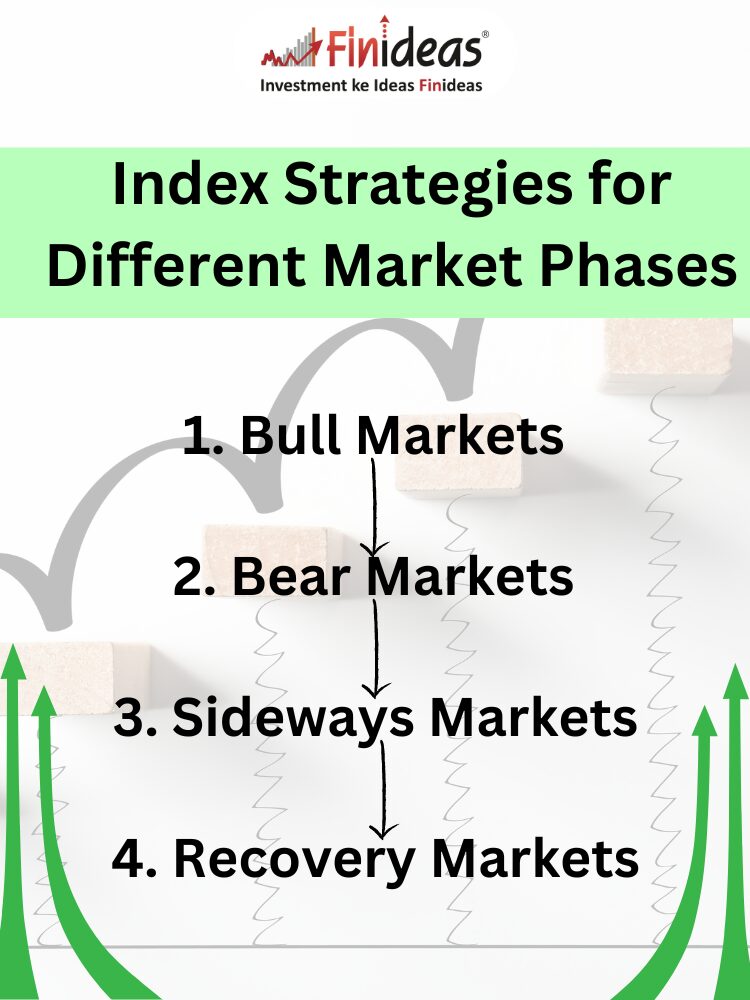What it’s Like Riding the Economic Waves?
Introduction:
In the vast ocean of financial markets, investors often find themselves navigating through various economic waves. These waves come in the form of market cycles, characterized by periods of expansion, contraction, stability, and everything in between. Each phase presents unique challenges and opportunities for investors, making it essential to adopt appropriate strategies to navigate through them effectively.
What are Market Phases?
Before delving into index strategies, it’s crucial to understand the different market phases. These phases include:
- Bull Markets: Characterized by rising asset prices and investor optimism, bull markets are periods of economic expansion and growth.
- Bear Markets: Contrary to bull markets, bear markets involve declining asset prices and pessimism among investors. Economic indicators often point towards recession or economic downturn during these periods.
- Sideways Markets: Also known as range-bound or consolidating markets, sideways markets feature relatively stable asset prices with little to no significant trend in either direction.
- Recovery Markets: Following a bear market, recovery markets signify a gradual improvement in economic conditions, with asset prices beginning to rise after hitting bottom.
You must know of Index Long Term Strategy to Beat economic waves to a extent.
What is Index Strategies for Different Market Phases?
Now, let’s explore some index strategies tailored to navigate through various market phases:
- Bull Markets: During bull markets, investors often favor growth-oriented strategies. Investing in broad market indices or sector-specific indices that are poised to benefit from the prevailing economic expansion can be lucrative. Additionally, adopting a buy-and-hold approach with low-cost index funds can capitalize on the upward momentum of the market.
- Bear Markets: In bear markets, the primary goal shifts towards capital preservation and defensive positioning. Investors may consider shifting their allocations towards defensive sectors such as utilities, consumer staples, or healthcare. Alternatively, short-selling or investing in inverse ETFs can help hedge against market downturns.


- Sideways Markets: Sideways markets require a more nuanced approach. Investors can capitalize on short-term price fluctuations by employing strategies such as swing trading or utilizing volatility indices. Moreover, focusing on dividend-paying stocks or income-generating assets can provide steady returns during periods of market stagnation.
- Recovery Markets: As economic conditions improve during recovery markets, investors can gradually transition towards growth-oriented strategies. This may involve reallocating investments towards cyclical sectors such as technology, industrials, or consumer discretionary. Additionally, maintaining exposure to defensive assets until the recovery gains traction can provide a cushion against potential setbacks.
In your experience, which index strategies have you found most effective during volatile market phases, and why? Share your insights and experiences in the comments below!
As investors continue to navigate through the ebbs and flows of the financial markets, employing the right index strategies can significantly influence their long-term success. By understanding the dynamics of different market phases and tailoring their approaches accordingly, investors can ride the economic waves with confidence and resilience.
Happy Investing!
This article is for education purpose only. Kindly consult with your financial advisor before doing any kind of investment.

